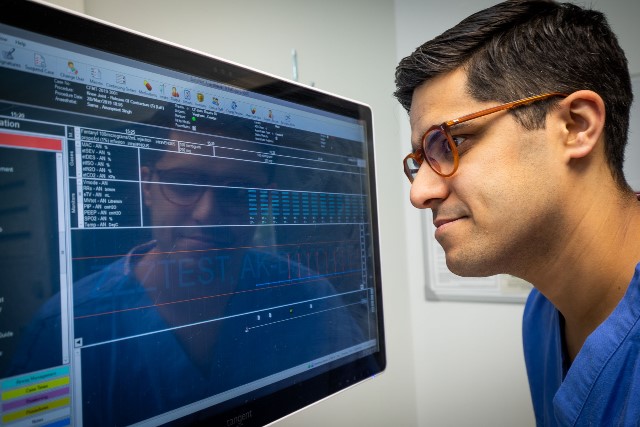
Staff at the Royal Free London (RFL) have hailed the end of ‘mountains of patient notes’ thanks to a new electronic patient record (EPR) system, which is freeing up clinicians’ time and improving patient care.
Doctors, nurses and other clinicians can now enter details straight on to the EPR, instead of spending time hunting for and trawling through patient records.
Information from devices such as blood pressure monitors is uploaded to the system automatically and if a patient’s observations are outside the normal range, staff are alerted.
The EPR allows clinicians to access up-to-date information about patients, enabling them to deliver better care, improving efficiency and reducing the chance of an error being made. The system also uses patient data to create documents for clinical records and correspondence to GPs and patients.
The system went live at Barnet Hospital, Chase Farm Hospital, Edgware Community Hospital, Finchley Memorial Hospital and the maternity department at the Royal Free Hospital in November 2018. It was implemented in just 11 months to enable the opening of the new digital Chase Farm Hospital.
Christine Gracey, a pain management clinical nurse specialist at Barnet Hospital and Chase Farm Hospital, said: “I love that there are no longer flaky pastry mountains of notes. We’ve made it to the 21st century. I’m pretty happy about how it’s enhanced my day to day work as it’s freeing up precious time.”
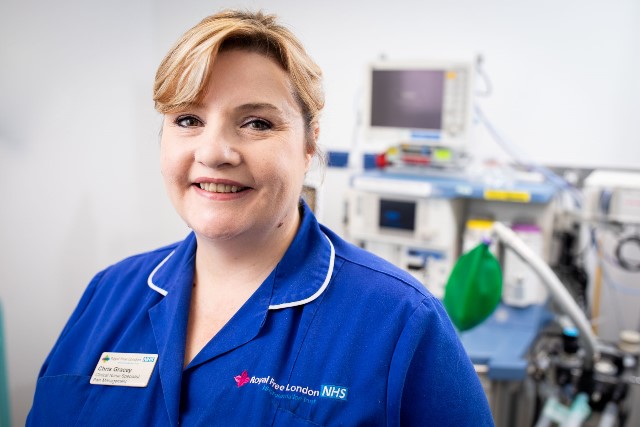
Christine Gracey loves an end to mountains of notes
EPR also improves the patient experience as they no longer need to provide their details multiple times to be entered onto different systems.
With all information in one record, patients no longer face delays or inconvenience because diagnostic results or medication histories are inaccessible. Instead of paper records at the patient’s bedside, computers or laptops are used to view and input information directly. This record is available at hospital sites at any time as well as remotely, using secure access, preventing delays to patient care and speeding review, diagnosis and treatment.
Sarah Fowkes, a midwife in the ante-natal clinic at the Royal Free Hospital, said: “Previously women had their hand-written and hand-held bundle of notes and this has gone. It’s a lot easier to read a patient’s plan – which can include everything from observations to telephone conversations – and you no longer have the issue of trying to read other people’s hand-writing.
“The next person coming to the plan can see what’s been said so they don’t have to ask the patient for the same information. This has proved to be a time-saver for me and patient safety is improved because communication between colleagues has improved.
“Initially there was some dragging of feet, simply because people were fearful of change, but once midwives understood it was simply a different way of documenting, rather than a different way of providing care, that was a real breakthrough and everyone is much more confident navigating it.”
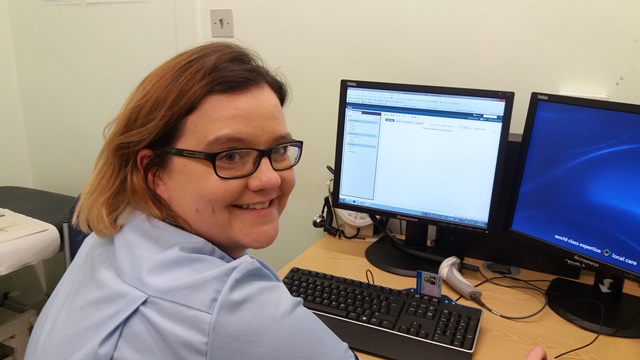
Sarah Fowkes welcomes not having to try and decipher other people's hand-writing
Patients are now able to view their hospital health records, manage hospital appointments and receive test results and messages from their hospital care team by registering for a secure online patient portal.
In addition, patients can be confident that they are receiving the safest and most effective care in line with the latest clinically-evidenced pathways. When patients come to RFL hospitals with certain symptoms or conditions, new digital clinical pathways now prompt their healthcare team to the right course of treatment, based on the latest clinical best practice. In the first 16 weeks after launch, over 4,000 patients were assigned to a clinical pathway.
Philip Shea-Simonds, consultant rheumatologist working from the new Chase Farm Hospital, said: “We did head into it with a bit of trepidation. We had just moved into a completely new hospital and weeks later we had EPR so people were naturally hesitant.
“Where the trust got it right and listened was significantly cutting down clinic schedules to allow time for us to see patients but also get to grip with EPR. What also worked was the combined learning and collaboration between disciplines. So it was doctors, nurses and AHP’s all learning to use it together and I met lots of people I hadn’t done before. There was a shared desire to get it running and get it right and we had the time to do that.
“Discovering just what it was able to deliver from a functionality aspect was exciting. Being able to view patient notes remotely instead of only being able to do so if I was physically next to them means that I can be involved in patient care without having to be present.
“EPR also enables me to easily access forthcoming appointments and I can pull up scans from radiology straight away. It provides me with the short cuts I need to let me concentrate on patient care.”
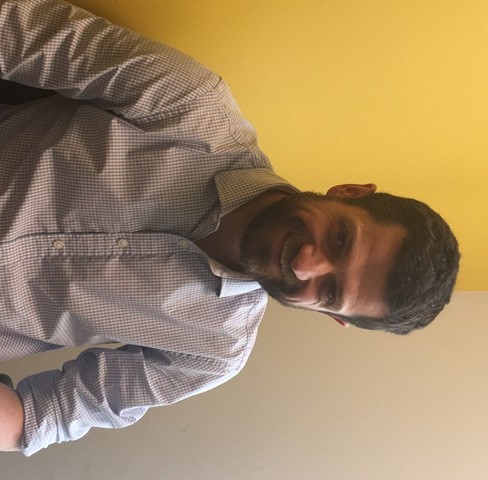
Philip Shea-Simonds: "There was a shared desire to get it running and get it right"
Sachin Prabhu, clinical director for anaesthetics, said: “Anaesthesia was the first area to go live and we co-designed the module with Cerner. We are amongst the first in the country to have an EPR anaesthesia module and we now don’t use paper at all.
“This is a huge difference to before where we were writing down everything from heart rate to blood pressure. Imagine flying an aeroplane with 20 to 30 monitors and having to write it all down.
“I can log in from any computer and the information is there in real time. I can now confirm things instead of having to ask the same questions all over again. If the patient has any allergies to medication it flags it up. In theatre the equipment is integrated so we don’t have to write things down but can interpret the data.”
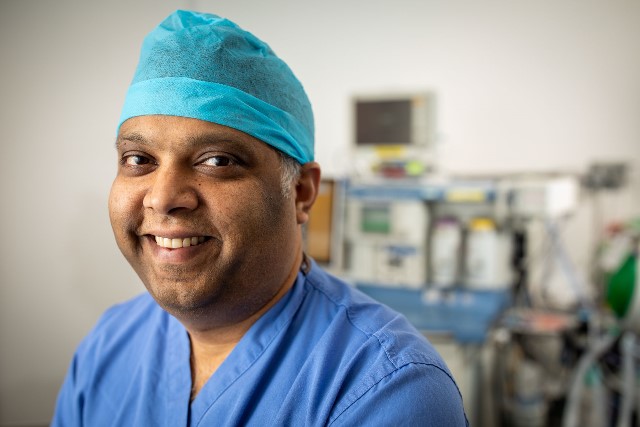
Sachin Prabhu says EPR has made a "huge difference" for staff and patients
Distie Profit, general manager, Cerner UK, said: “Patients are at the heart of everything we do and supporting NHS trusts to standardise the way they work is a core component of delivering better, safer and more efficient care to the populations we serve. The innovative approach by the Royal Free London to achieve this – through digitised care pathways – is positioning them at the forefront of digital care, enabling them to deliver the best possible outcomes for their patients.
“We are hugely proud and privileged to be part of this journey which will transform the experience of patients and staff.”
Dr Chris Streather, chief medical officer and chief clinical information officer for RFL, said: “Digital innovation is a key priority here at the Royal Free London and we are excited to be leading the way in harnessing technology to increase efficiency, reduce variations in care and improve patient outcomes. It has been thanks to the hard work of our staff that EPR has been a success – we are already starting to see many of the advantages the new system is bringing to patients and staff.”
Glenn Winteringham, group chief digital officer, added: “At the Royal Free London we understand how important it is to keep developing ways to deliver better care to patients - using new technology is a vital part of this. We’re delighted that EPR has been successfully introduced in less than a year – all thanks to our dedicated staff. The design and delivery of our EPR has been led by clinicians, so it means patient care is at the core of how the system works. We are starting to see early benefits that deliver against our aims of better outcomes, enhanced patient and clinician experience, and the reduced cost of care.”
Katie Trott, chief nursing information officer, said: “There are many ways in which EPR helps our staff deliver better care to patients. It improves patient safety by providing alerts for medication protocols and increases efficiency by freeing up clinicians’ time and reducing unnecessary variation in care. The patient portal allows patients to enter their pre-op assessment information from home, instead of having to attend hospital as they did previously – so both patients and staff are seeing the value of the new system.”
Main image (Amanpreet Sarna, anaesthetic registrar and chief medical information officer at Chase Farm Hospital)
 Translate
Translate